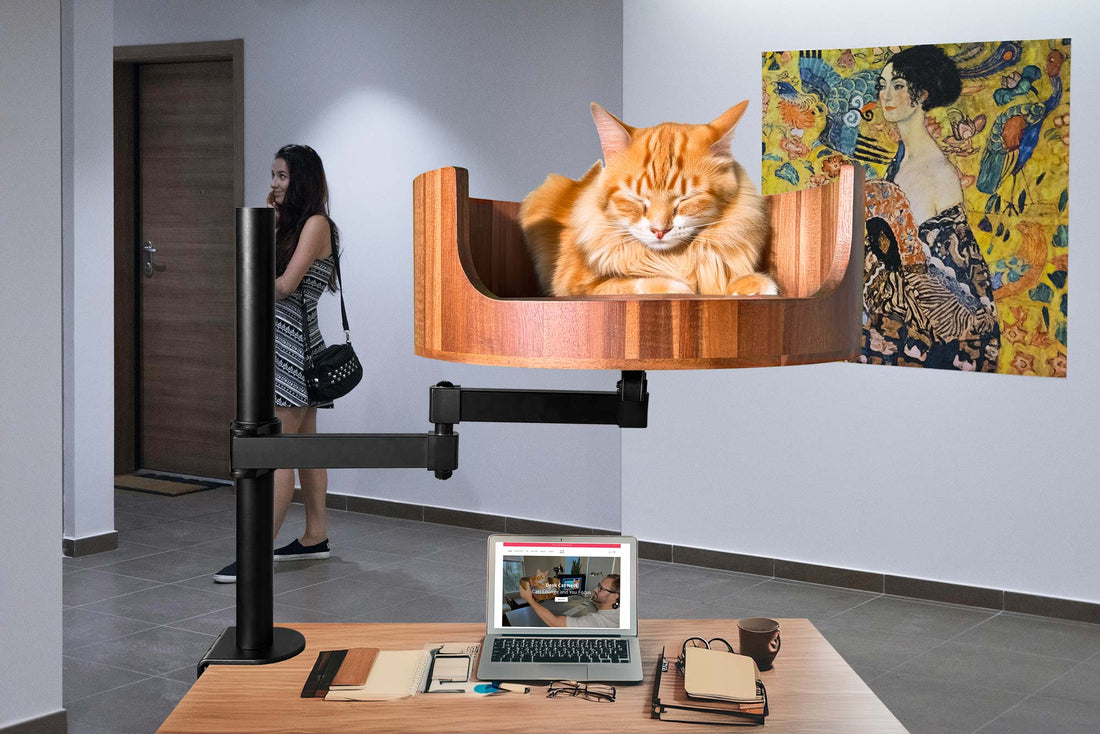
Why Do Cats Tremble: Understanding Feline Shivers
Share
Have you ever noticed your feline friend trembling for no apparent reason? Cats are known for their grace and poise, so it can be concerning to see them shivering or trembling. In this article, we will explore the reasons behind feline shivers and what you can do to help your cat feel more comfortable.
From cold weather chills to underlying health issues, there are a variety of reasons why cats may tremble. Understanding the cause of your cat's shivers can help you provide the appropriate care and support. Additionally, we will discuss how to differentiate between normal shivering and signs of a more serious problem, as well as ways to make your cat feel safe and secure during moments of trembling. So, if you've ever wondered why your cat trembles or shakes, keep reading to gain a better understanding of this common feline behavior.
1. Trembling in cats can be caused by a variety of factors, including fear, excitement, or medical conditions.
2. Understanding the context in which the tremors occur can help determine if they are a cause for concern.
3. Shivering in cats can also be a natural response to changes in temperature or during grooming.
4. It's important to observe your cat's behavior and monitor any changes in trembling frequency or intensity.
5. Consulting with a veterinarian is recommended if you are unsure about the cause of your cat's shivering.
Causes of Feline Shivers
Cats can tremble or shiver for various reasons, including cold temperatures, anxiety, excitement, pain, or illness. If your cat is shivering, it's essential to observe their behavior and surroundings to determine the potential cause. For example, if your cat is shivering after coming in from the cold, providing them with a warm blanket or heating pad can help alleviate their discomfort. On the other hand, if your cat is trembling due to anxiety or fear, try to create a calm and safe environment for them to reduce their stress levels.
Medical Conditions Associated with Trembling
In some cases, trembling in cats can be a symptom of an underlying medical condition. Conditions such as hyperthyroidism, hypothermia, seizures, or pain can cause cats to shiver uncontrollably. If your cat's trembling is persistent or accompanied by other concerning symptoms such as lethargy, loss of appetite, or difficulty breathing, it's crucial to consult a veterinarian for a thorough evaluation. Your vet may recommend diagnostic tests such as blood work, x-rays, or ultrasounds to identify the root cause of your cat's trembling.
Managing Feline Shivers
Once you've identified the cause of your cat's trembling, you can take steps to help manage their shivers effectively. For example, if your cat is shivering due to cold temperatures, ensure they have access to warm bedding, a cozy cat bed, or a heated cat nest to keep them comfortable. If your cat is anxious or stressed, consider using pheromone diffusers or calming supplements to help relax them. Remember to provide your cat with a safe and secure environment where they feel comfortable and at ease to reduce their likelihood of trembling.
Frequently Asked Questions
Why do cats tremble?
Cats may tremble for a variety of reasons, including excitement, fear, or medical issues. Trembling can be a normal response to certain situations, but if you notice excessive or prolonged trembling, it may be a sign of an underlying health problem that should be addressed by a veterinarian.
Is the Desk Cat Nest designed to help with trembling in cats?
The Desk Cat Nest is not specifically designed to address trembling in cats. However, providing a comfortable and safe space for your cat to relax may help reduce stress and anxiety, which can contribute to trembling in some cats.
Can the Desk Cat Nest help with other behavioral issues in cats?
While the Desk Cat Nest is primarily intended to provide a cozy resting spot for your cat, some cats may find comfort and security in the enclosed space, which could potentially help with certain behavioral issues. However, it is important to address any underlying medical or behavioral problems with guidance from a veterinarian or animal behaviorist.
How should I introduce my cat to the Desk Cat Nest?
Introduce your cat to the Desk Cat Nest gradually by placing it in a quiet and familiar location where your cat likes to rest. You can entice your cat with treats or toys to explore the nest and make it a positive experience. Allow your cat to become familiar with the nest at their own pace, and avoid forcing them to use it if they are not comfortable.
In conclusion, the Desk Cat Bed is a valuable choice for helping cats who tremble due to its unique design and comforting materials. This cozy and secure bed provides cats with a safe and comfortable space to relax, reducing their anxiety and stress levels. The added warmth and support of the Desk Cat Bed can also help improve circulation and muscle relaxation, further soothing trembles in cats. By choosing the Desk Cat Bed, pet owners can provide their feline friends with a peaceful and soothing environment to alleviate trembling and promote overall well-being.



















































